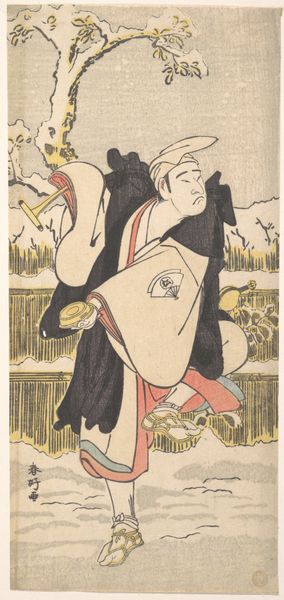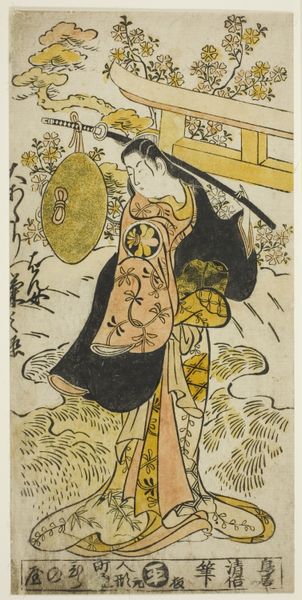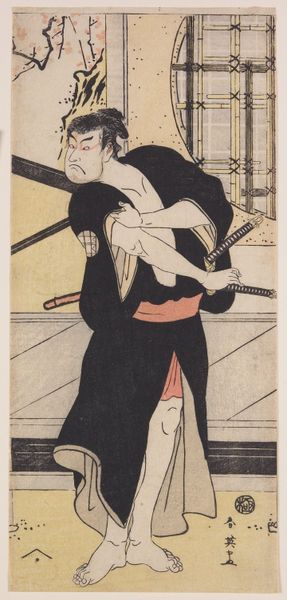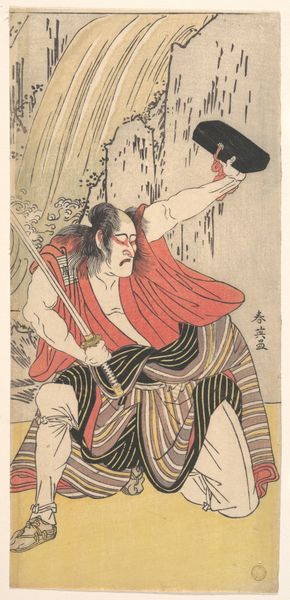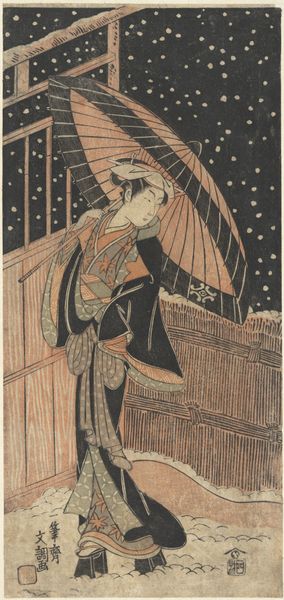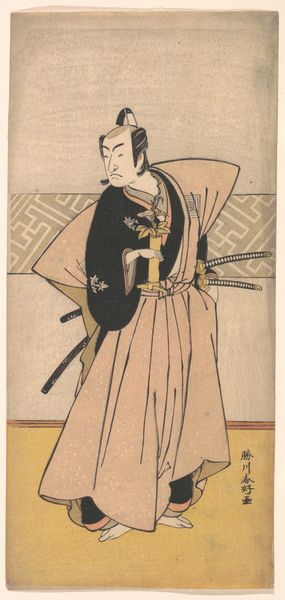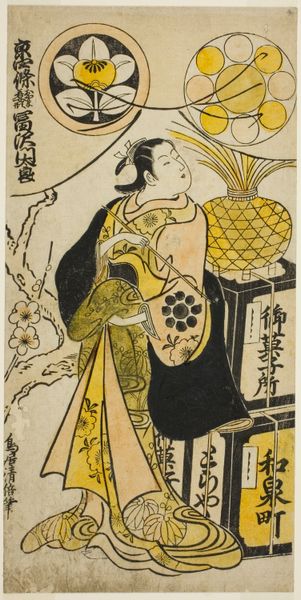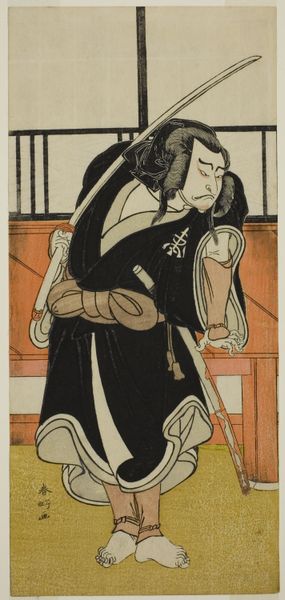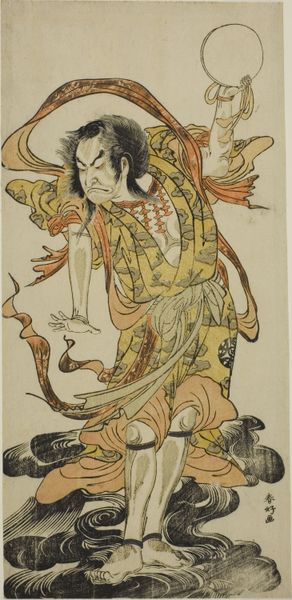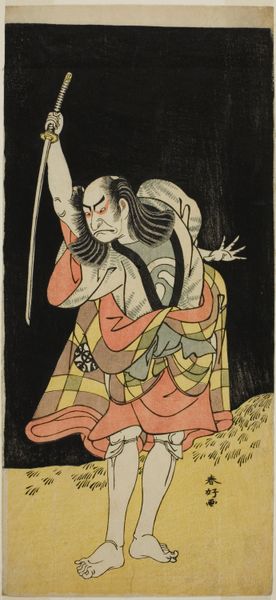
The Actor Nakayama Kojuro VI as Ono Sadakuro, in Act Five of Kanadehon Chushingura (Treasury of the Forty-seven Loyal Retainers), Performed at the Nakamura Theater from the Eleventh Day of the Fifth Month, 1786 c. 1786
0:00
0:00
print, woodblock-print
#
narrative-art
# print
#
asian-art
#
ukiyo-e
#
figuration
#
woodblock-print
Dimensions: 31.6 × 14.7 cm (12 1/2 × 5 3/4 in.)
Copyright: Public Domain
Curator: Oh, look at this. Shun'ei’s woodblock print, done around 1786. It depicts Nakayama Kojuro VI embodying Ono Sadakuro from the play *Kanadehon Chushingura.* Editor: There’s something both grand and almost melancholic in this figure, wouldn't you agree? The sheer physicality, those strong legs planted so firmly. He just feels…weighted down. Curator: Indeed, there's weight there. Woodblock prints in the Ukiyo-e tradition, such as this, were very popular but they represent such interesting methods of production—the carving, the registration of colors, the involvement of publishers… so many hands involved in the art-making itself. This was really early mass production. Editor: It’s like the actor becomes both the subject and the object. Carried from the stage onto a piece of paper meant for many eyes, filtered through the lens of the artist, the printers, the playwright. This notion of theatrical performance blending with printmaking fascinates me, all for wider distribution. Do you think, because this character is part of this big revenge story, his heavy look reflects his sense of responsibility or the play's tone? Curator: Could be a dash of both. *Chushingura* is such a national story of sacrifice, loyalty, vengeance... the weight of expectations perhaps. Note, however, the woodcut’s delicate lines creating such a solid figure – that's the work of a true craftsman shaping ephemeral theater into lasting images. Editor: And consider the implications for costume design – clearly meticulously studied and rendered in each edition of the play, from stage to block print. A constant material iteration. One wonders who exactly the market for such artworks were, were the viewers from the upper or middle class, or everyone? Curator: Pretty much everyone! That is its populist appeal. These weren't made for emperors; it's the visual culture of everyday folk who can’t afford a unique painting, something mass-produced and enjoyed. The fleeting nature of theatre embalmed for longer scrutiny. Editor: Thinking about it, each impression might hold the spirit of a particular performance. So interesting to think about the constant recreation of a particular moment of performance. I think there is a deeply rooted sense of temporality rooted in Japanese culture that makes this work particularly strong and lasting, like watching fireworks knowing that its impact will fade very quickly. Curator: Exactly. Each print is not just ink on paper; it's a time capsule, a moment captured, a whisper from a stage long gone. Editor: So it’s both of lasting power and of something very, very delicate... something to consider for those on their way into or out of the galleries!
Comments
No comments
Be the first to comment and join the conversation on the ultimate creative platform.

